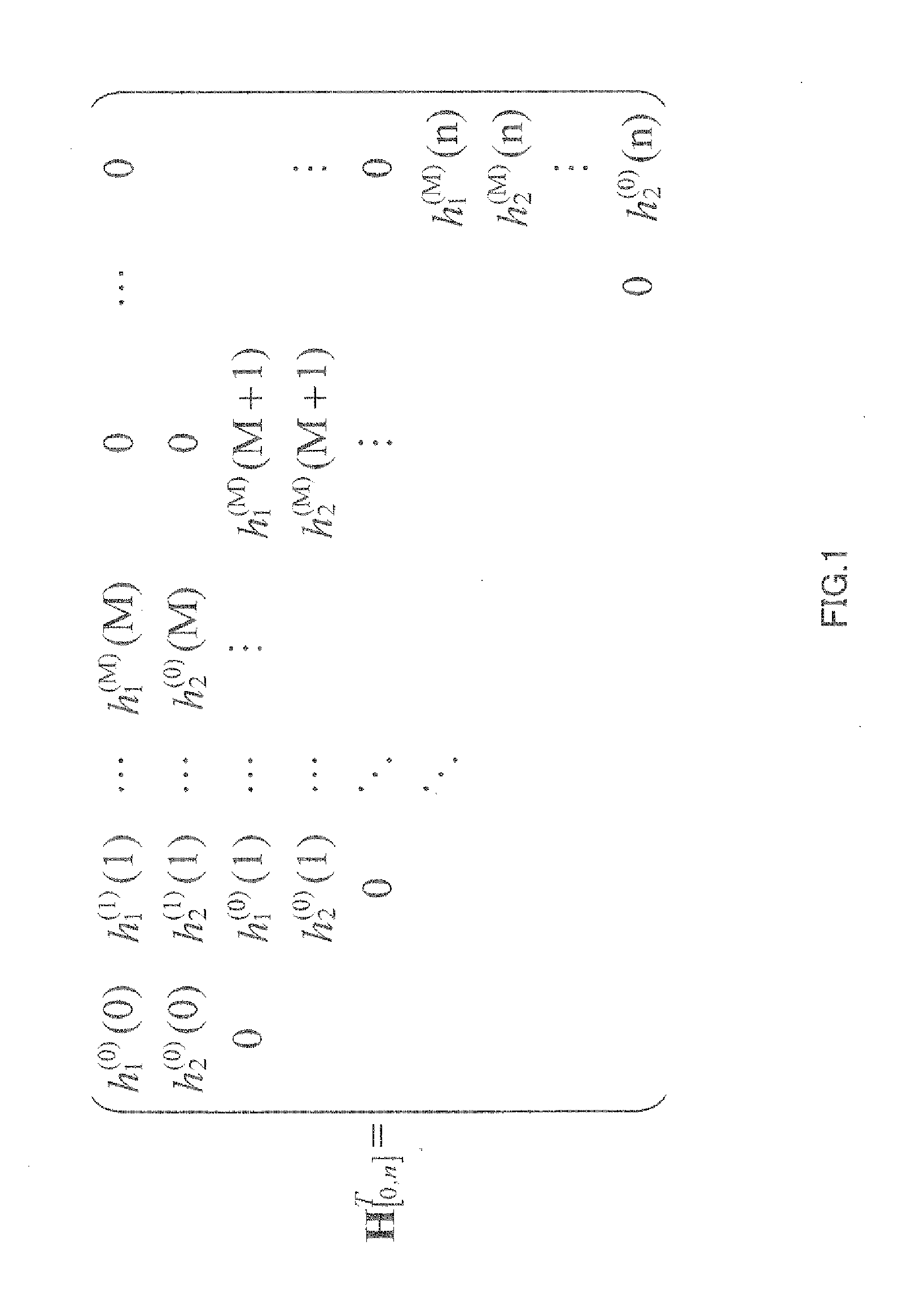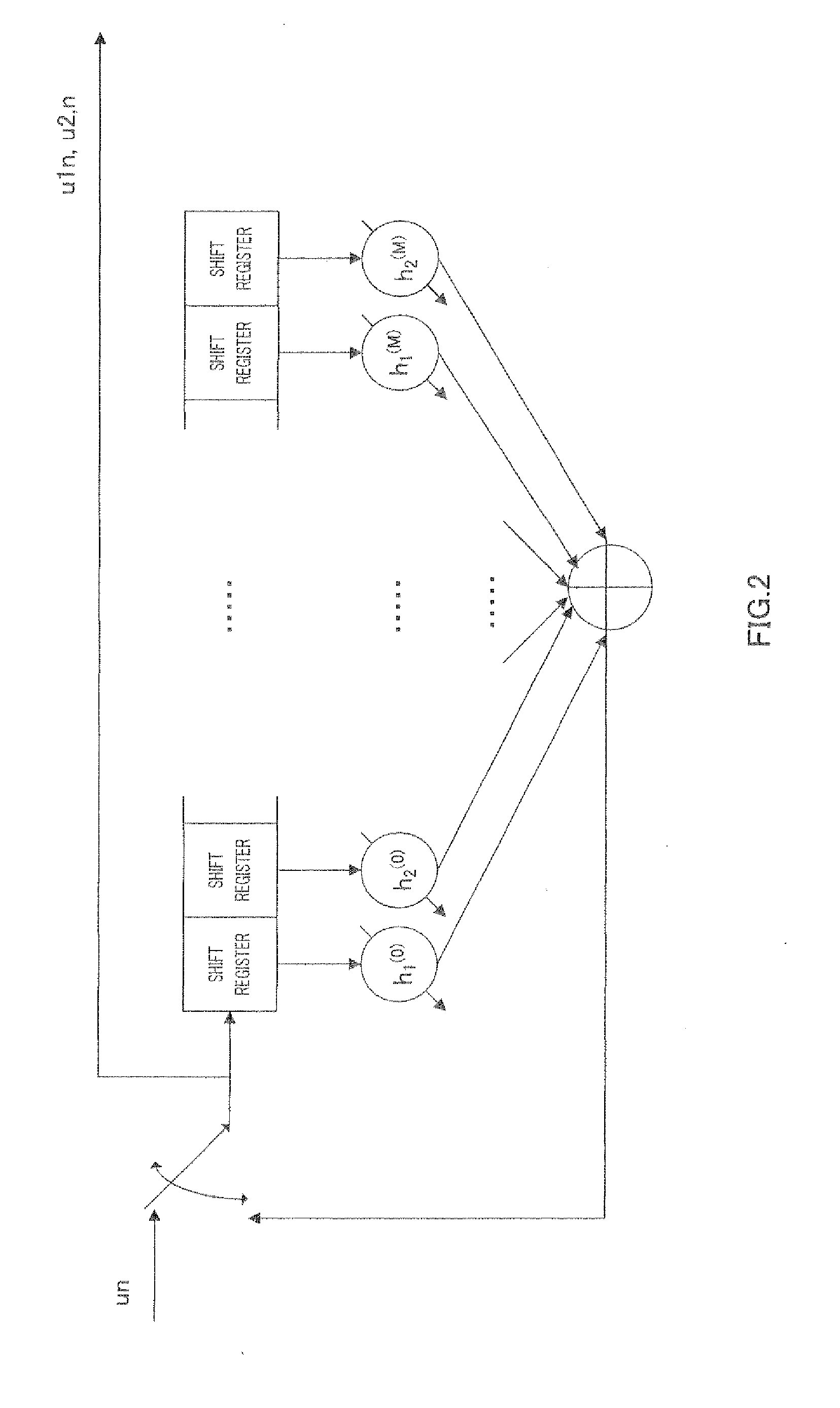Encoding method, decoding method, coder and decoder
a technology of encoder and decoder, applied in the direction of coding, code conversion, error correction/detection using convolutional codes, etc., can solve the problems of avoiding the change of coding rate or the transmission of redundant sequences through padding or puncturing, and achieve high error correction capability and secure high data quality
- Summary
- Abstract
- Description
- Claims
- Application Information
AI Technical Summary
Benefits of technology
Problems solved by technology
Method used
Image
Examples
embodiment 1
[0666]The present embodiment will describe a code configuration method of an LDPC-CC based on a parity check polynomial of a time varying period greater than 3 having excellent error correction capability.
[0667][Time Varying Period of 6]
[0668]First, an LDPC-CC of a time varying period of 6 will be described as an example.
[0669]Consider Equations 27-0 to 27-5 as parity check polynomials (that satisfy 0) of an LDPC-CC of a coding rate of (n−1) / n (n is an integer equal to or greater than 2) and a time varying period of 6.
[27]
(Da#0,1,1+Da#0,1,2+Da#0,1,3)X1(D)+(Da#0,2,1+Da#0,2,2+Da#0,2,3)X2(D)+ . . . +(Da#0,n−1,1+Da#0,n−1,2+Da#0,n−1,3)Xn−1(D)+(Db#0,1+Db#0,2+Db#0,3)P(D)=0 (Equation 27-0)
(Da#1,1,1+Da#1,1,2+Da#1,1,3)X1(D)+(Da#1,2,1+Da#1,2,2+Da#1,2,3)X2(D)+ . . . +(Da#1,n−1,1+Da#1,n−1,2+Da#1,n−1,3)Xn−1(D)+(Db#1,1+Db#1,2+Db#1,3)P(D)=0 (Equation 27-1)
(Da#2,1,1+Da#2,1,2+Da#2,1,3)X1(D)+(Da#2,2,1+Da#2,2,2+Da#2,2,3)X2(D)+ . . . +(Da#2,n−1,1+Da#2,n−1,2+Da#2,n−1,3)Xn−1(D)+(Db#2,1+Db#2,2+Db#2,3)P(D...
embodiment 2
[0931]The present embodiment will describe, in detail, an LDPC-CC encoding method and the configuration of an encoder based on the parity check polynomials described in Embodiment 1.
[0932]First, consider an LDPC-CC of a coding rate of 1 / 2 and a time varying period of 3 as an example. Parity check polynomials of a time varying period of 3 are provided below.
[42]
(D2+D1+1)X1(D)++(D3+D1+1)P(D)=0 (Equation 42-0)
(D3+D1+1)X1(D)+(D2+D1+1)P(D)=0 (Equation 42-1)
(D3+D2+1)X1(D)+(D3+D2+1)P(D)=0 (Equation 42-2)
[0933]At this time, P(D) is obtained as shown in the equations below.
[43]
P(D)=(D2+D1+1)X1(D)+(D3+D1)P(D) (Equation 43-0)
P(D)=(D3+D1+1)X1(D)+(D2+D1)P(D) (Equation 43-1)
P(D)=(D3+D2+1)X1(D)+(D3+D2)P(D) (Equation 43-2)
[0934]Equations 43-0 to 43-2 are then represented as follows:
[44]
P[i]=X1[i]⊕X1[i−1]⊕X1[i−2]⊕P[i−1]⊕P[i−3] (Equation 44-0)
P[i]=X1[i]⊕X1[i−1]⊕X1[i−3]⊕P[i−1]⊕P[i−2] (Equation 44-1)
P[i]=X1[i]⊕X1[i−2]⊕X1[i−3]⊕P[i−2]⊕P[i−3] (Equation 44-2)
[0935]where the symbol “⊕” represents t...
embodiment 3
[0953]The present embodiment will specifically describe a code configuration method for achieving higher error correction capability when simple tail-biting described in Non-Patent Literatures 10 and 11 is performed for an LDPC-CC based on the parity check polynomials described in Embodiment 1.
[0954]A case has been described in Embodiment 1 where a g-th (g=0, 1, . . . , q−1) parity check polynomial of an LDPC-CC of a time varying period of q (q is a prime number greater than 3) and a coding rate of (n−1) / n is represented as shown in equation 36. The number of terms of each of X1(D), X2(D), . . . , Xn−1(D) and P(D) in equation 36 is 3 and in this case, Embodiment 1 has specifically described the code configuration method (constraint condition) for achieving high error correction capability. Moreover, Embodiment 1 has pointed out that even when the number of terms of one of X1(D), X2(D), . . . , Xn−1(D) and P(D) is 1 or 2, high error correction capability may be likely to be achieved....
PUM
 Login to View More
Login to View More Abstract
Description
Claims
Application Information
 Login to View More
Login to View More - R&D
- Intellectual Property
- Life Sciences
- Materials
- Tech Scout
- Unparalleled Data Quality
- Higher Quality Content
- 60% Fewer Hallucinations
Browse by: Latest US Patents, China's latest patents, Technical Efficacy Thesaurus, Application Domain, Technology Topic, Popular Technical Reports.
© 2025 PatSnap. All rights reserved.Legal|Privacy policy|Modern Slavery Act Transparency Statement|Sitemap|About US| Contact US: help@patsnap.com



